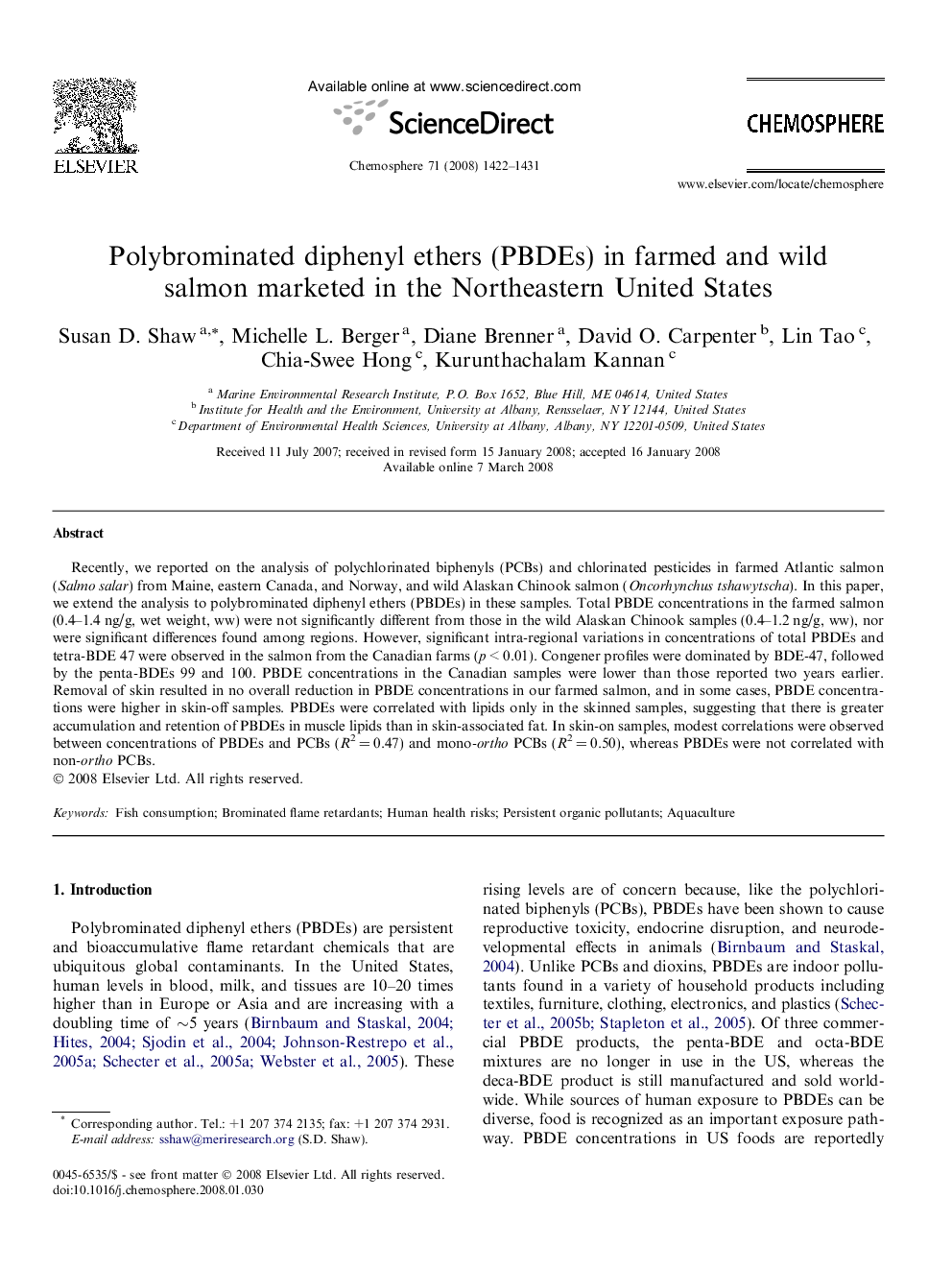| Article ID | Journal | Published Year | Pages | File Type |
|---|---|---|---|---|
| 4414490 | Chemosphere | 2008 | 10 Pages |
Recently, we reported on the analysis of polychlorinated biphenyls (PCBs) and chlorinated pesticides in farmed Atlantic salmon (Salmo salar) from Maine, eastern Canada, and Norway, and wild Alaskan Chinook salmon (Oncorhynchus tshawytscha). In this paper, we extend the analysis to polybrominated diphenyl ethers (PBDEs) in these samples. Total PBDE concentrations in the farmed salmon (0.4–1.4 ng/g, wet weight, ww) were not significantly different from those in the wild Alaskan Chinook samples (0.4–1.2 ng/g, ww), nor were significant differences found among regions. However, significant intra-regional variations in concentrations of total PBDEs and tetra-BDE 47 were observed in the salmon from the Canadian farms (p < 0.01). Congener profiles were dominated by BDE-47, followed by the penta-BDEs 99 and 100. PBDE concentrations in the Canadian samples were lower than those reported two years earlier. Removal of skin resulted in no overall reduction in PBDE concentrations in our farmed salmon, and in some cases, PBDE concentrations were higher in skin-off samples. PBDEs were correlated with lipids only in the skinned samples, suggesting that there is greater accumulation and retention of PBDEs in muscle lipids than in skin-associated fat. In skin-on samples, modest correlations were observed between concentrations of PBDEs and PCBs (R2 = 0.47) and mono-ortho PCBs (R2 = 0.50), whereas PBDEs were not correlated with non-ortho PCBs.
